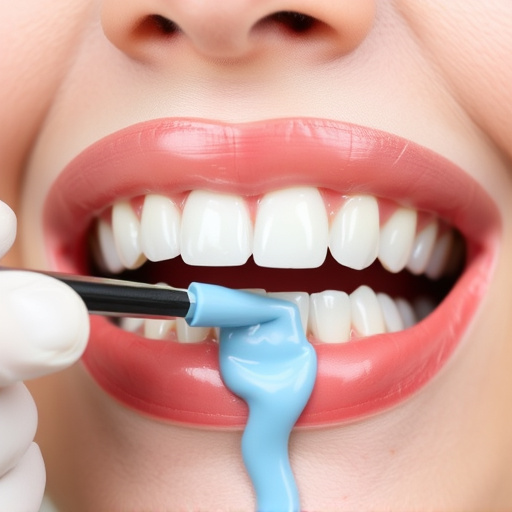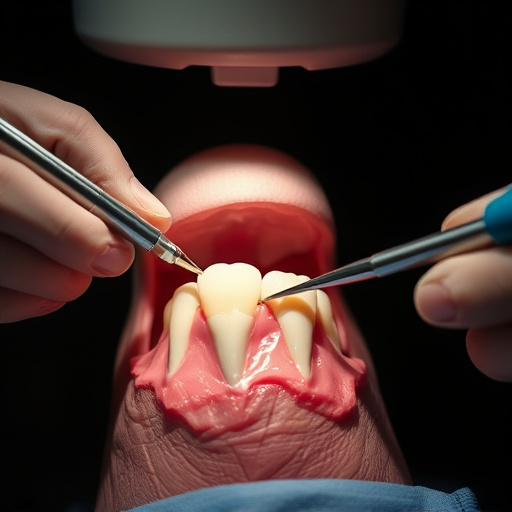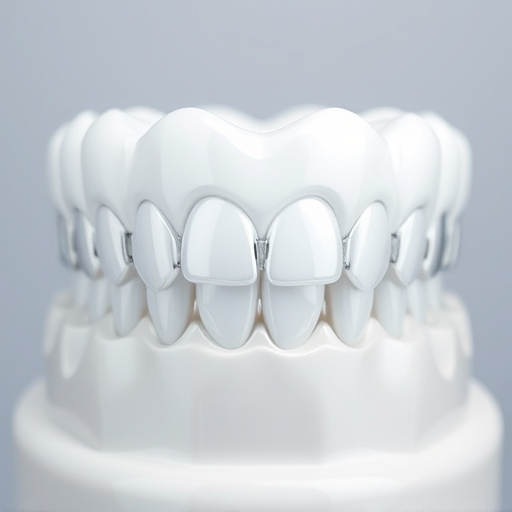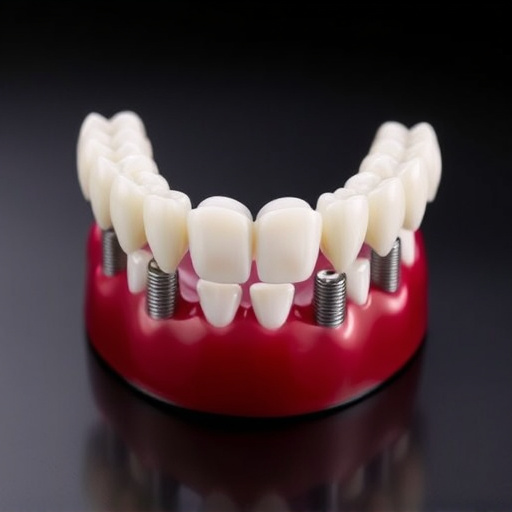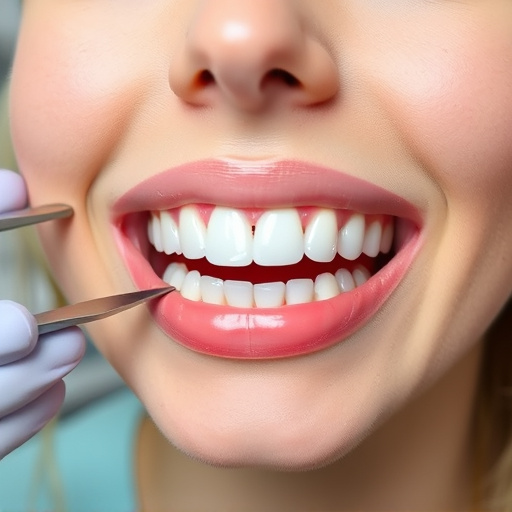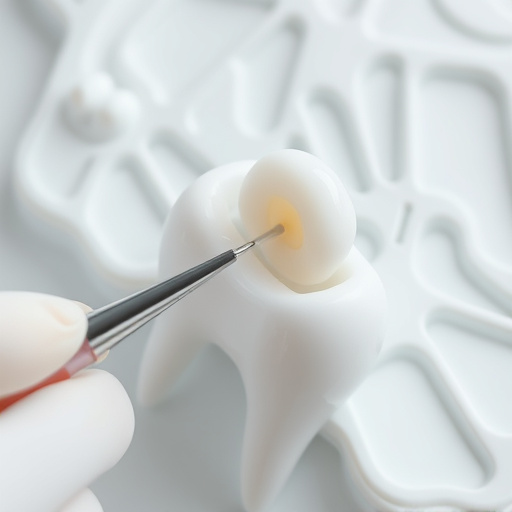Gum disease, progressing from gingivitis to periodontitis, demands early intervention. Laser dentistry treatment emerges as a revolutionary, minimally invasive option, precisely targeting bacteria and promoting healing. This advanced technique offers faster recovery times compared to traditional methods, making it suitable for children's dentistry and general oral care. After a detailed examination, dental professionals use lasers to eliminate bacteria and reduce inflammation without tissue damage. Post-treatment, focus on healing and proper oral hygiene practices, potentially followed by additional procedures for comprehensive prevention, ensures optimal oral health.
“Discover a revolutionary approach to gum disease therapy with the advent of laser dentistry. This advanced technique offers a minimally invasive solution, transforming traditional treatments. In this article, we explore the effectiveness of laser dentistry for managing gum disease. From understanding its impact on oral health to outlining the benefits and steps involved, you’ll gain insights into why this procedure is gaining traction. Explore how laser dentistry treatment can restore your smile, promote healing, and prevent future complications.”
- Understanding Gum Disease and Its Impact
- The Advantages of Laser Dentistry for Treating Gum Disease
- Steps Involved in Laser Dentistry Treatment for Gum Disease
Understanding Gum Disease and Its Impact

Gum disease is a common oral health issue that affects millions worldwide. It’s a progressive condition starting with gingivitis, causing inflammation and bleeding gums, and advancing to periodontitis, which can lead to significant damage to gum tissues and bones supporting teeth. This not only results in tooth loss but also contributes to various systemic health problems. The impact is profound, affecting overall well-being and quality of life.
Early detection and intervention are key to managing gum disease effectively. Laser dentistry treatment has emerged as a game-changer in this regard. Unlike traditional methods like wisdom tooth removal or dental fillings, which often involve invasive procedures, laser therapy offers a more precise, gentle, and minimally disruptive approach. It can precisely target and destroy bacteria while promoting healing, making it ideal for treating both gingivitis and periodontitis, even in hard-to-reach areas. This advanced technique is revolutionizing children’s dentistry and general oral care practices by providing a faster recovery time and reduced discomfort compared to conventional treatments.
The Advantages of Laser Dentistry for Treating Gum Disease
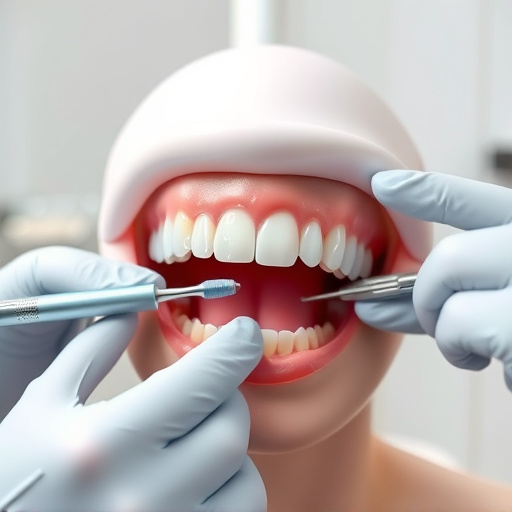
Laser dentistry treatment offers a revolutionary approach to effective gum disease therapy, providing several advantages over traditional methods. This advanced technology utilizes focused beams of light to eradicate bacteria and promote healing, making it a minimally invasive option for patients. Unlike surgical procedures, laser treatments can preserve healthy gums and bone while effectively removing plaque and tartar buildup.
One of the key benefits is its precision, allowing dentists to target specific areas without affecting surrounding tissues. This results in reduced discomfort, faster recovery times, and less post-treatment bleeding compared to conventional gum disease therapies. Moreover, laser dentistry treatment can be seamlessly integrated into comprehensive dental care routines, including regular teeth cleaning and routine oral exams, offering a more holistic approach to maintaining optimal oral health.
Steps Involved in Laser Dentistry Treatment for Gum Disease
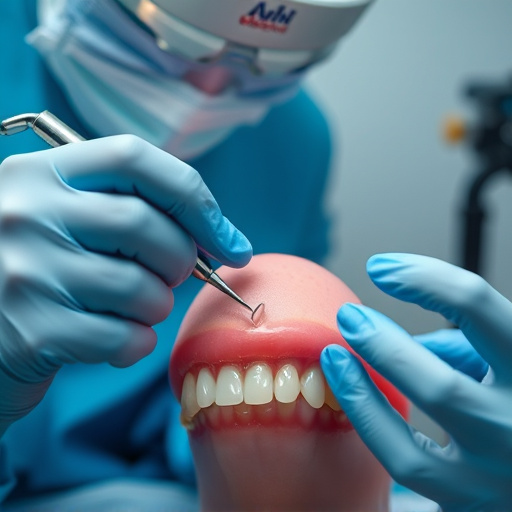
The process of laser dentistry treatment for gum disease typically involves several precise steps designed to promote healing and restore oral health. Initially, a dental professional will conduct a thorough examination to determine the severity of the gum disease and identify areas requiring intervention. This may include X-rays, visual inspections, and measuring pocket depths around teeth. Once targeted, the actual laser treatment begins. A laser instrument is used to gently deliver precise bursts of light energy to the affected gums, which helps to destroy bacteria and reduce inflammation without damaging surrounding tissues.
Following the laser procedure, a period of healing and recovery is essential. Patients may be advised on proper oral hygiene practices, including specialized teeth cleaning techniques and recommendations for topical treatments to aid in the prevention of further disease progression. In some cases, tooth repair procedures such as deep scaling or gum grafting might be necessary as part of comprehensive preventive dentistry to ensure long-term health and maintain a vibrant smile.
Laser dentistry treatment offers a revolutionary approach to effective gum disease therapy, providing numerous advantages over traditional methods. By utilizing advanced technology, this minimally invasive procedure not only improves periodontal health but also enhances overall oral well-being. The precise and targeted nature of lasers ensures a more comfortable experience for patients while offering faster recovery times and reduced risk of complications. Embracing laser dentistry treatment represents a significant step forward in managing gum disease, delivering long-lasting results that contribute to a healthier, brighter smile.




